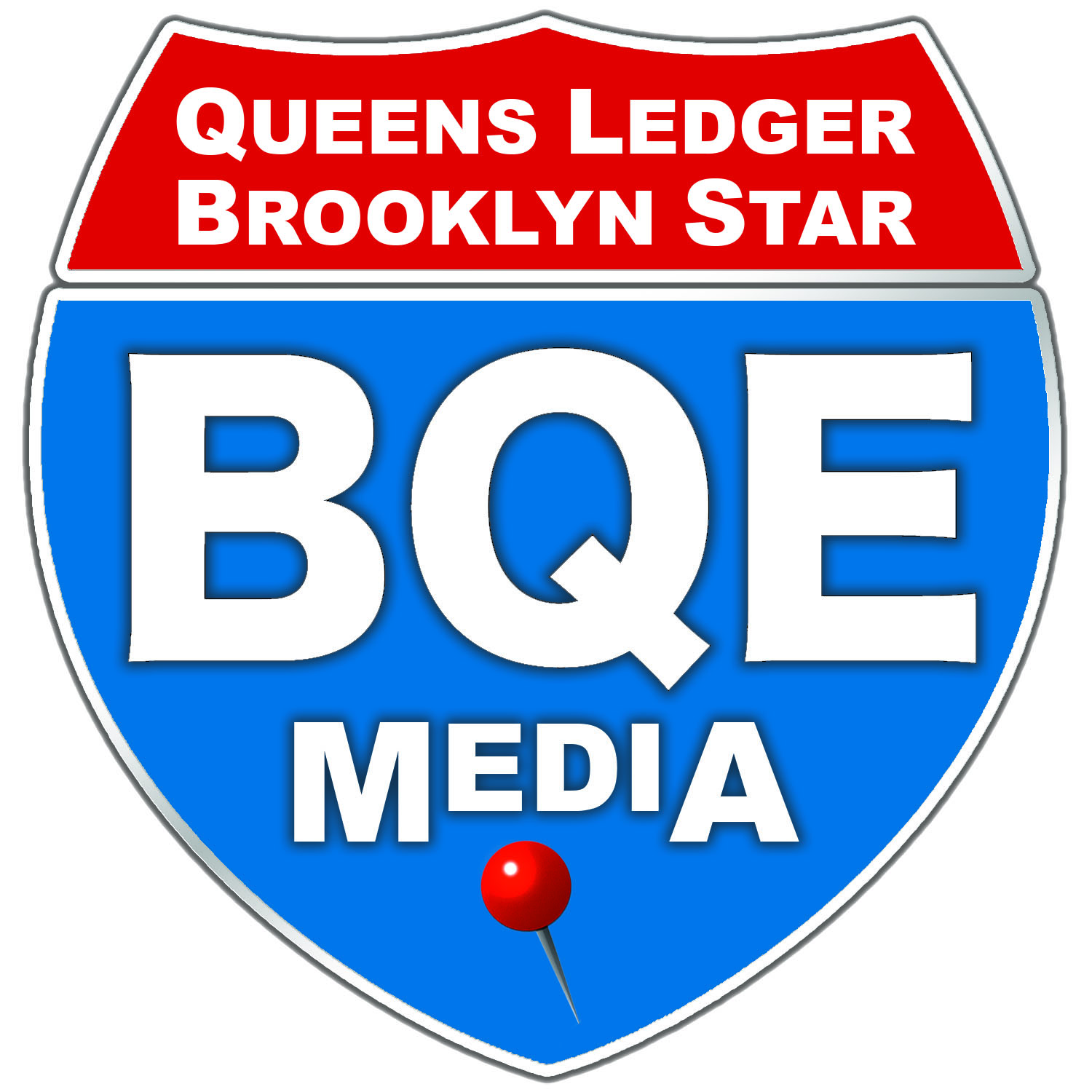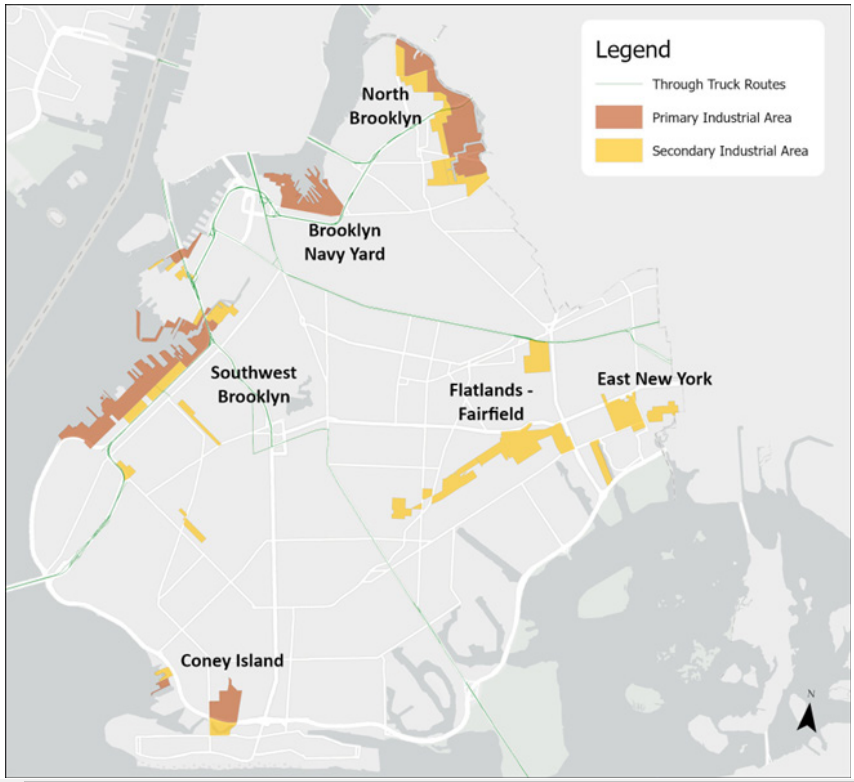By COLE SINANIAN
news@queensledger.com
At a town hall in Downtown Brooklyn on October 16, city planners faced sharp criticism from activists and North Brooklyn business leaders as they presented a first draft of the “NYC Industrial Plan” — a report first published in September that recommends rezoning some of the city’s historically industrial areas to allow for different kinds of economic uses and housing construction.
Although it could inform future land-use policy decisions, the plan is a draft report and does not guarantee any future rezonings, city planners stressed at the town hall, with a final version set to be released on December 31. Still, the plan drew swift condemnation from groups like Evergreen, a manufacturing business alliance in North Brooklyn, and Uprose, an environmental organization based in Sunset Park who warned that the plan’s failure to recommend protections for industrial areas in Williamsburg and Greenpoint would soon bring real estate speculation and could displace some of North Brooklyn’s last remaining manufacturing hubs.
“It’s sending a message to the market that it’s open season,” said Leah Archibald, Evergreen’s executive director. “They’re signalling to the market that they’re open to rezoning. And that alone imperils our business.”
In a written statement to the Star, Department of City Planning (DCP) Deputy Press Secretary Joe Marvilli urged that public feedback from the town halls would inform the final report and that nothing is set in stone yet:
“As the first comprehensive look at our industrial sector in decades, the NYC Industrial Plan is a great opportunity to ensure that these businesses, workers, and surrounding communities all continue to thrive,“ he wrote. “These recommendations can guide policies to create enough space for everyone and secure the city’s economic success for years to come.”
A feedback form about the plan can be found at www.nyc.gov/content/planning/pages/our-work/plans/citywide/nyc-industrial-plan.

City planners highlighted the ways in which New York City’s industrial economy has changed at a Brooklyn town hall on October 16. Photo by Cole Sinanian.
The Industrial Plan
The draft plan is set to be updated every eight years, and was mandated by 2023’s Local Law 172, a bill sponsored by the Bronx city councilmember Amanda Farias.
City planners researched the evolution of New York City’s industrial economy and surveyed the current distribution of industrial jobs across the five boroughs. The city’s industrial economy peaked in the mid-1950s, when industrial jobs accounted for nearly half of total employment. The industrial sector has shrunk since then but has also diversified, the draft report states. Newer kinds of industrial activity the report names include high-tech, prototyping, film, and green energy. More traditional industrial uses include construction, transportation, manufacturing, energy, utilities and waste management.
The report found that less than half of the identified industrial jobs in the city are headquartered in areas zoned for manufacturing, or M zones, while only 25% are located in “Industrial Business Zones,” or IBZs. These zones, created in 2006, provide tax credits to industrial and manufacturing firms that relocate to one the of 21 currently designated IBZs in New York City. IBZs also carry a stated commitment by the City to not allow rezoning that would permit housing, all in an effort to preserve their manufacturing and industrial uses.
Critics fear the plan’s failure to protect industrial zones in North Brooklyn’s IBZs — which, according to Evergreen, generate $15 billion in industrial economic activity — could invite real estate speculation and lead to future neighborhood displacement.
“An immigrant industry”
Visitors to the 5th floor event space at St. Francis College where the town hall was held were promptly handed a flyer by an Uprose activist titled “The New Draft Plan is a Death Sentence for Manufacturing.” The flyer highlighted key points of the plan that activists saw as threatening to local manufacturing companies, like the proposed allowance of non-industrial development — namely office buildings, creative studios and housing — in what are currently IBZs.
Meanwhile, Archibald walked around the room arguing with DCP staffers and handing out copies of Evergreen’s condemnation of the plan. Evergreen’s statement argues that the plan would “create a blueprint for gentrification” and “drive out industrial employers,” thereby erasing “accessible, family-sustaining jobs.”
The custom tailor Martin Greenfield Clothiers is one of Evergreen’s North Brooklyn manufacturing companies. Founded by Martin Greenfield, a Holocaust survivor who immigrated to Brooklyn in the 1940s after escaping Auschwitz, the company has dressed the likes of Bill Clinton, Lebron James, Leonardo DiCaprio and Barack Obama. Martin Greenfield passed away in 2024 and his sons Tod and Jay have since taken over. Tod, who attended the town hall, said his company has provided a gateway to the American dream for countless immigrants. According to statistics provided by Evergreen, industrial jobs in North Brooklyn, like those at Martin Greenfield Clothiers, pay significantly higher wages than the Brooklyn average for workers with only a high school diploma.
“These people can’t get a high tech job,” Greenfield said. “These jobs are the jobs they need. They live in the neighborhood, they walk to work, and this plan is going to gentrify the neighborhood. It’s going to push out their jobs, and it’s going to push them out.”
“We have 70 employees and they’ve all put their kids through college,” he continued. “And they’re all immigrants. It’s an immigrant industry. It’s a place where someone without a college degree, and even without any language skills, can get a steady job. All they have to do is show up to work and be diligent. They have health care, they have a pension, they have a good wage, and they have an opportunity to establish their family and become citizens.”
Greenfield compared his father’s experience in America with those of the immigrants who currently work for his company. When Martin Greenfield arrived in America, he was an orphan who didn’t speak English. It was a well-paying job in the manufacturing industry that allowed him to raise a family of first-generation Americans, his son said. The office jobs and tech jobs that the City’s plan suggests should come to North Brooklyn’s manufacturing corridor are generally not accessible to immigrants without English skills or a college degree. A major rezoning, Greenfield worries, could push many immigrants out of the area.
“Those jobs are critical to that community,” Greenfield says. “And that community is important. Where am I going to get people to run our sewing machines once the neighborhood gentrifies?”



